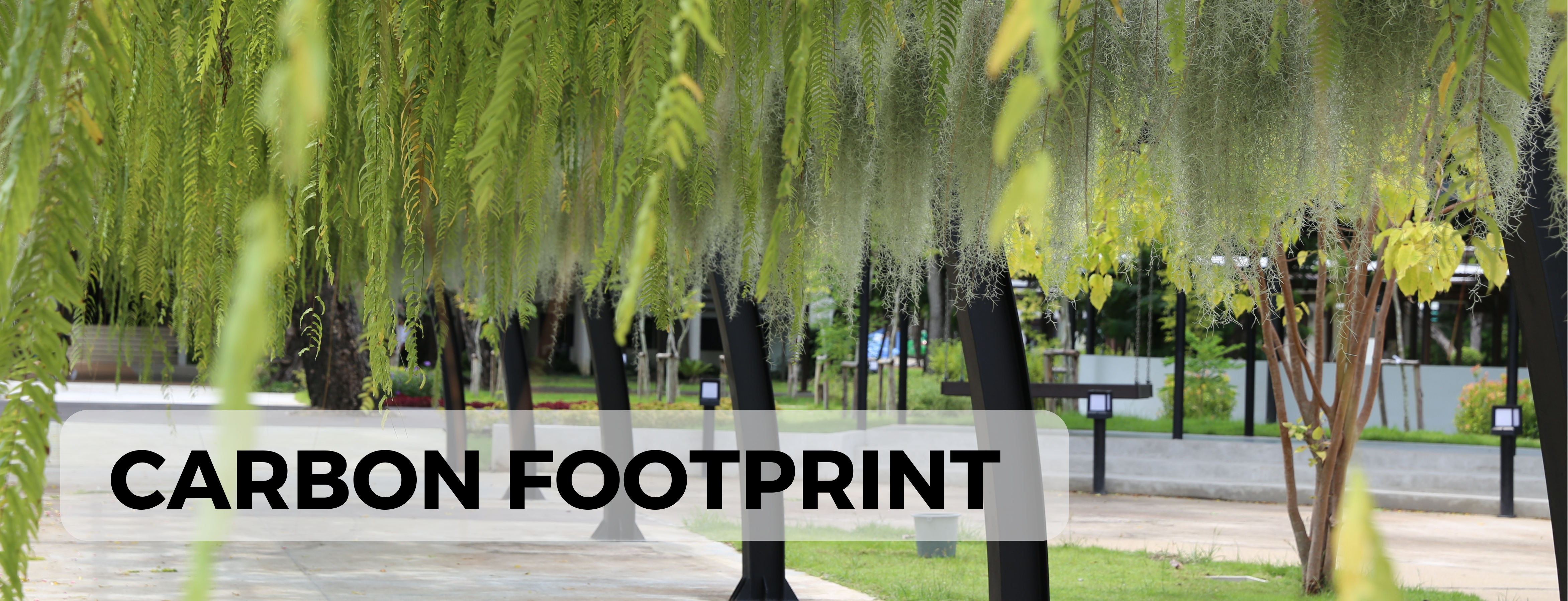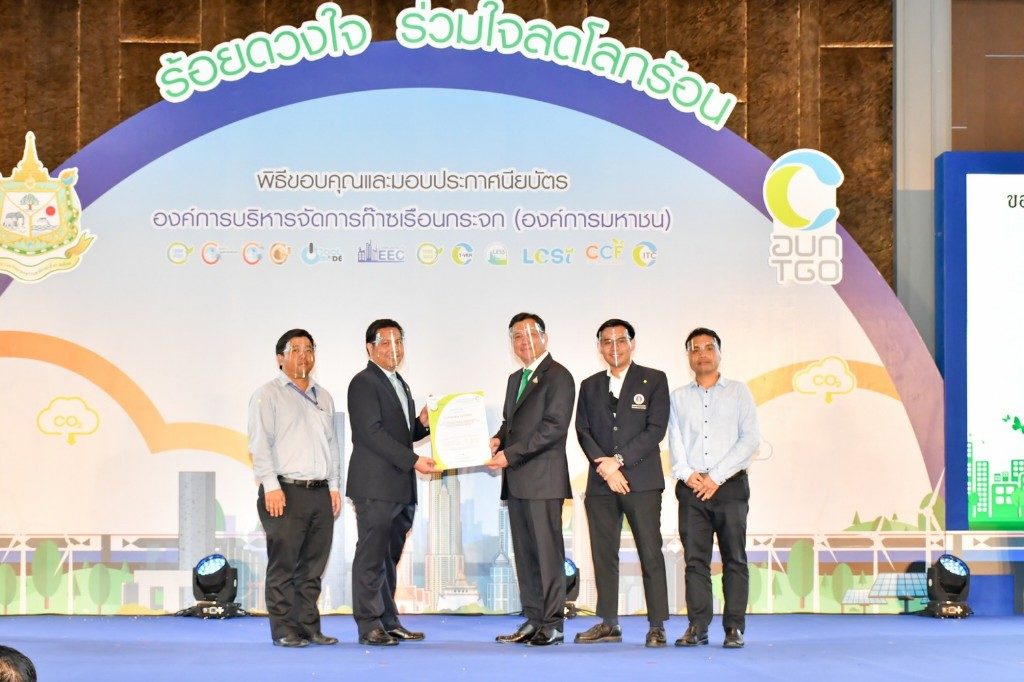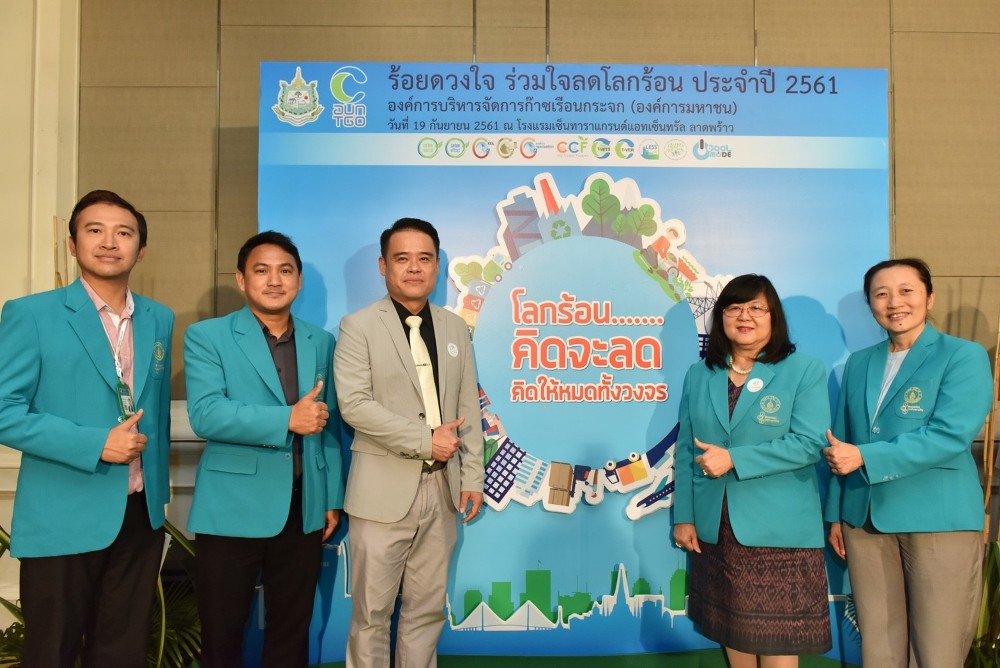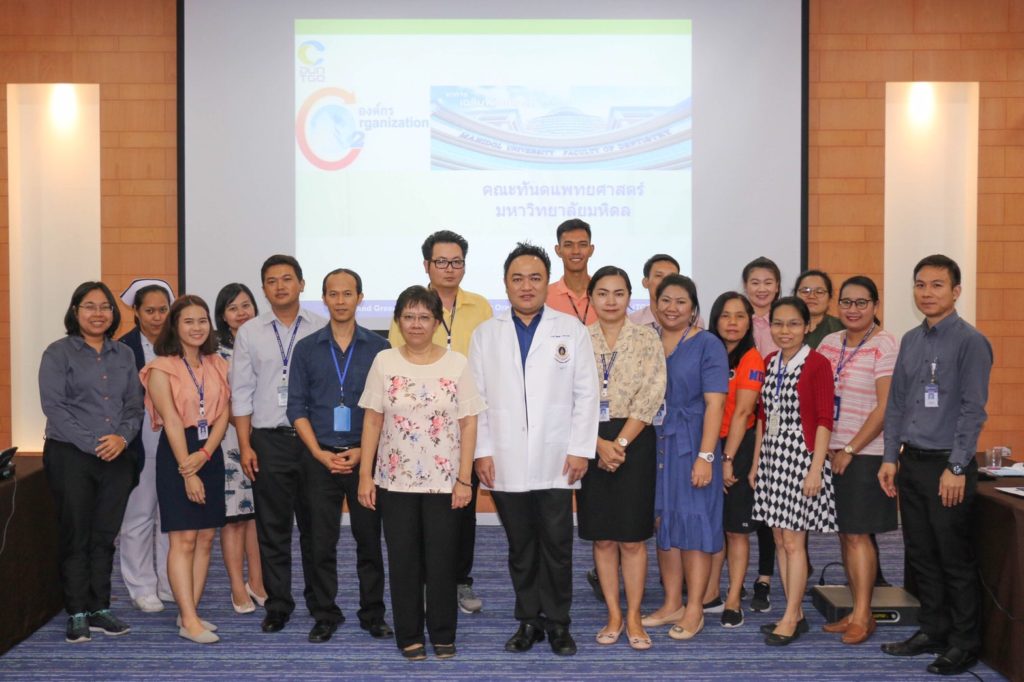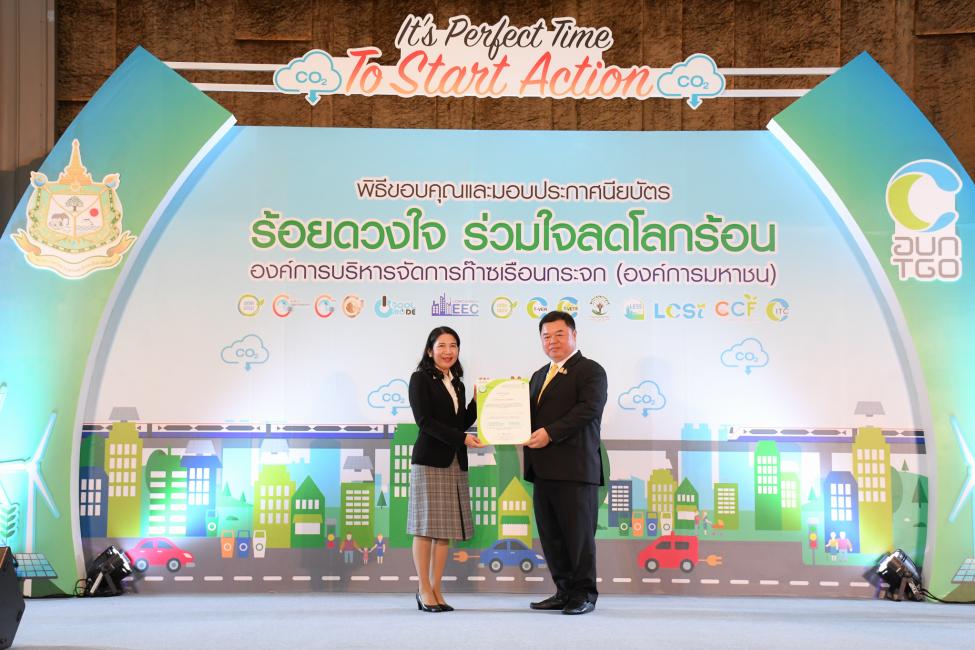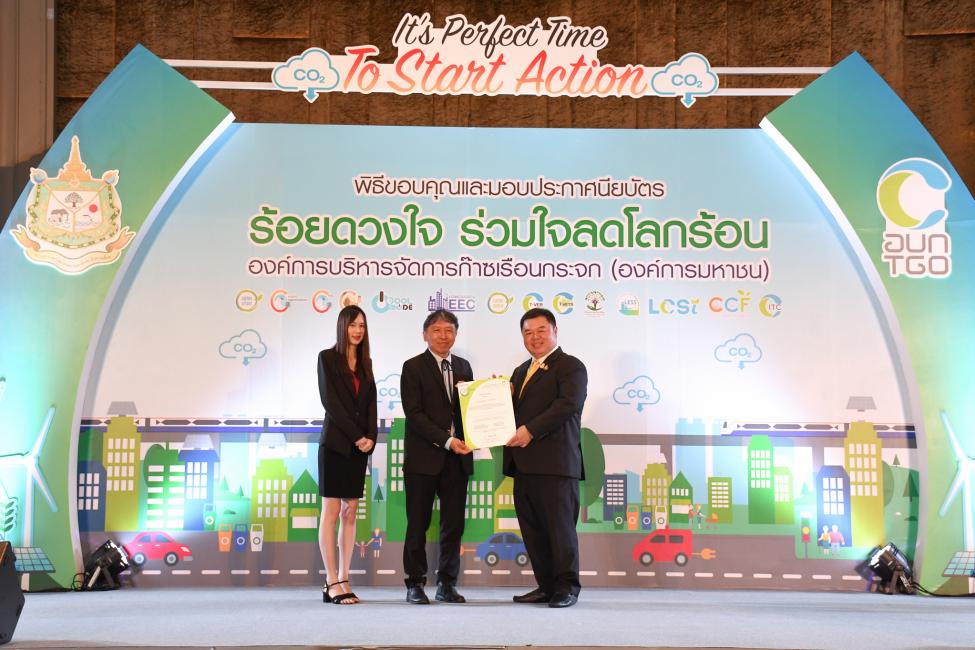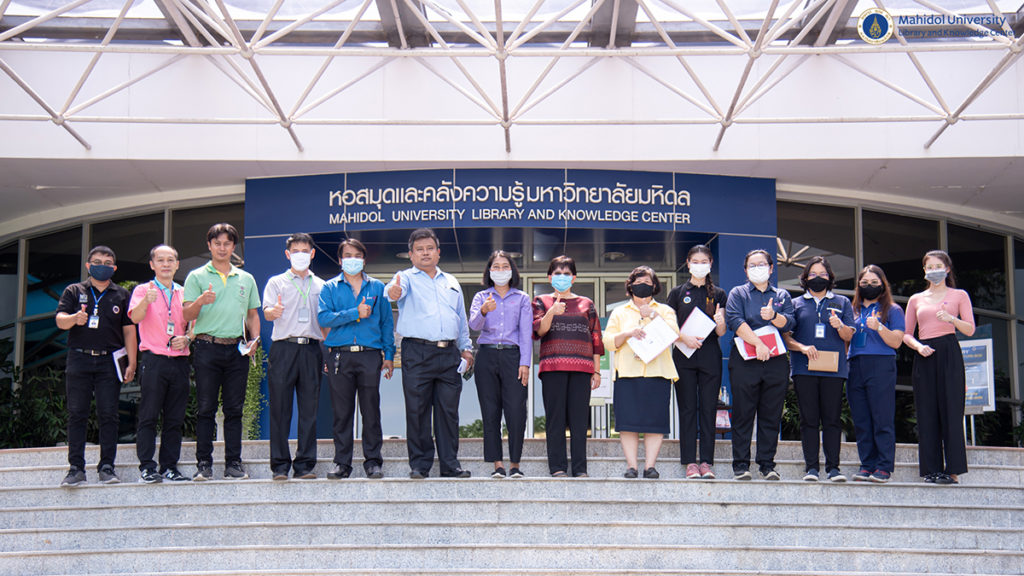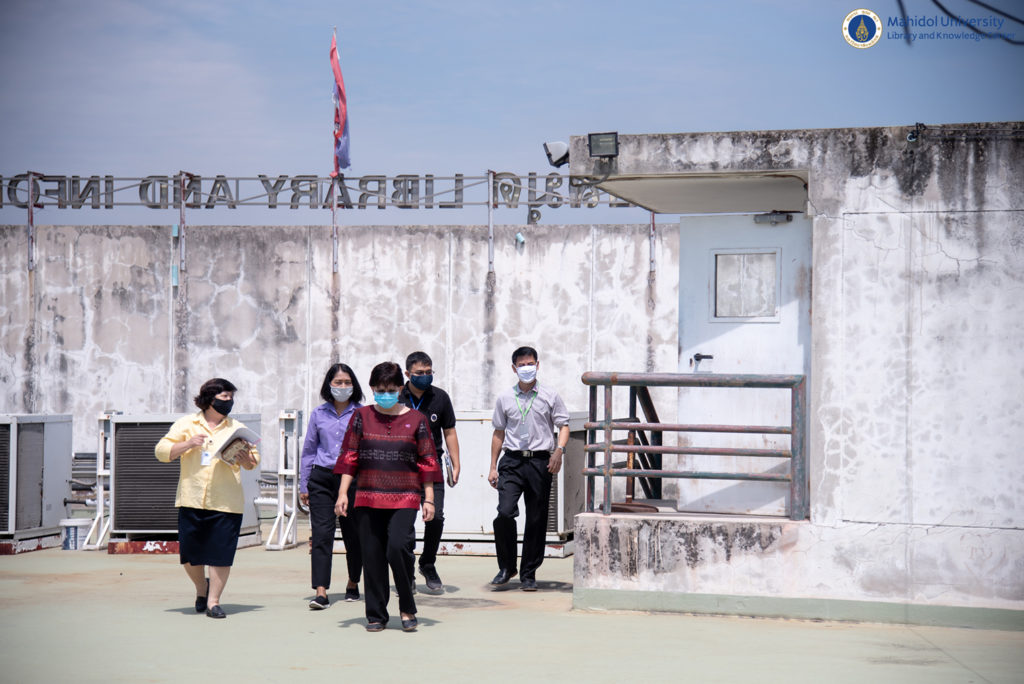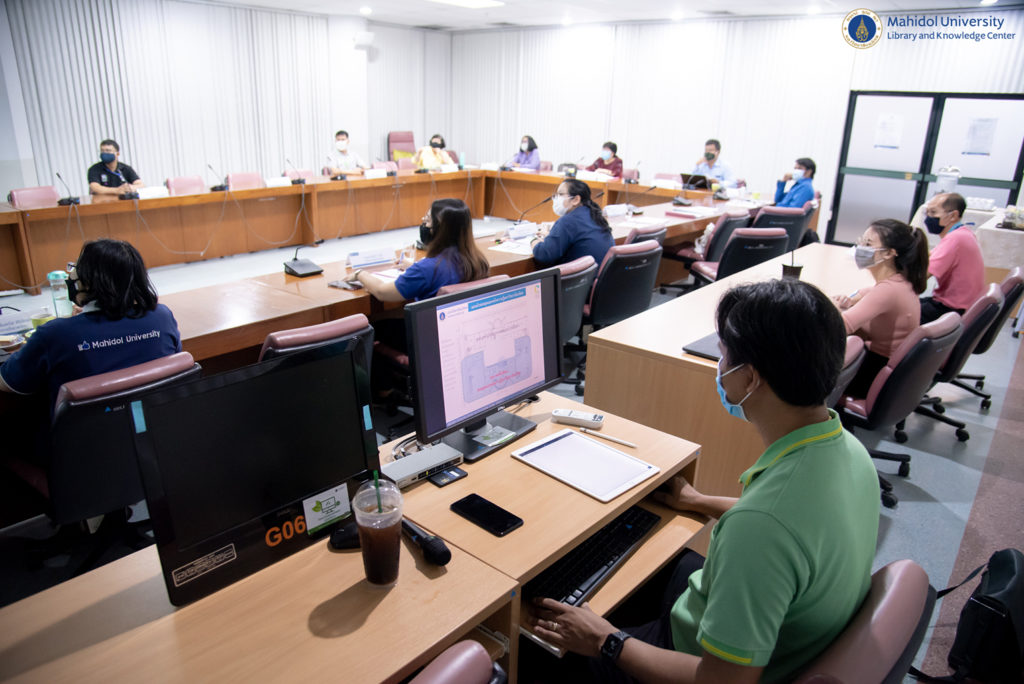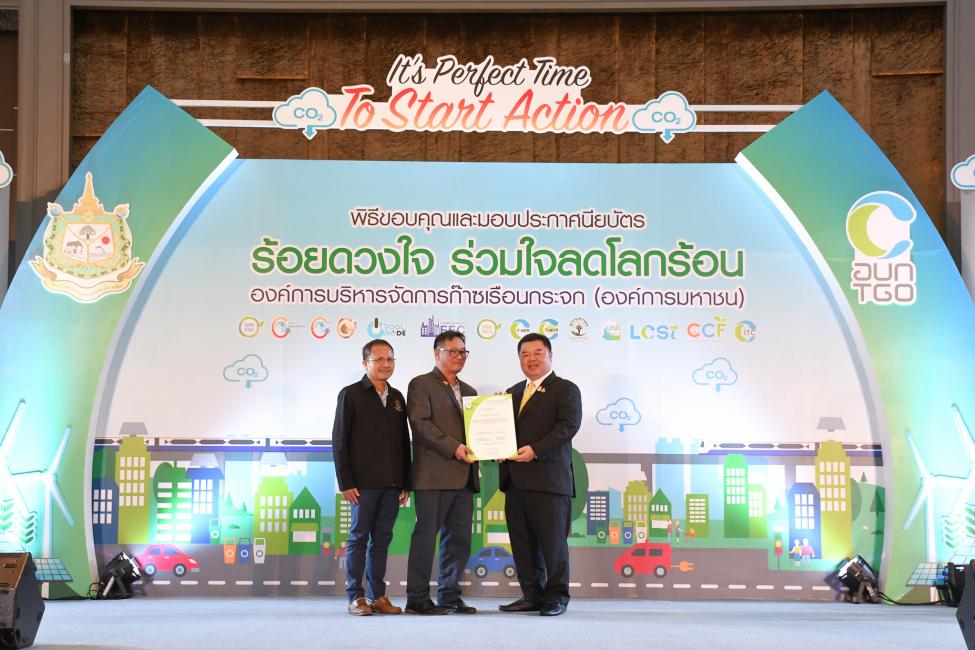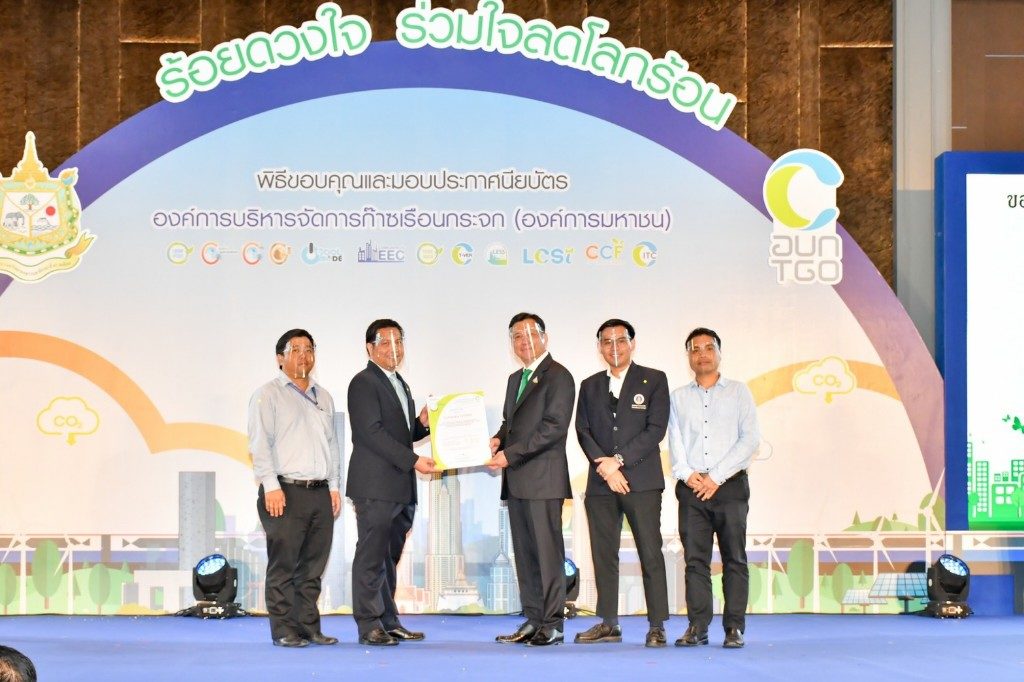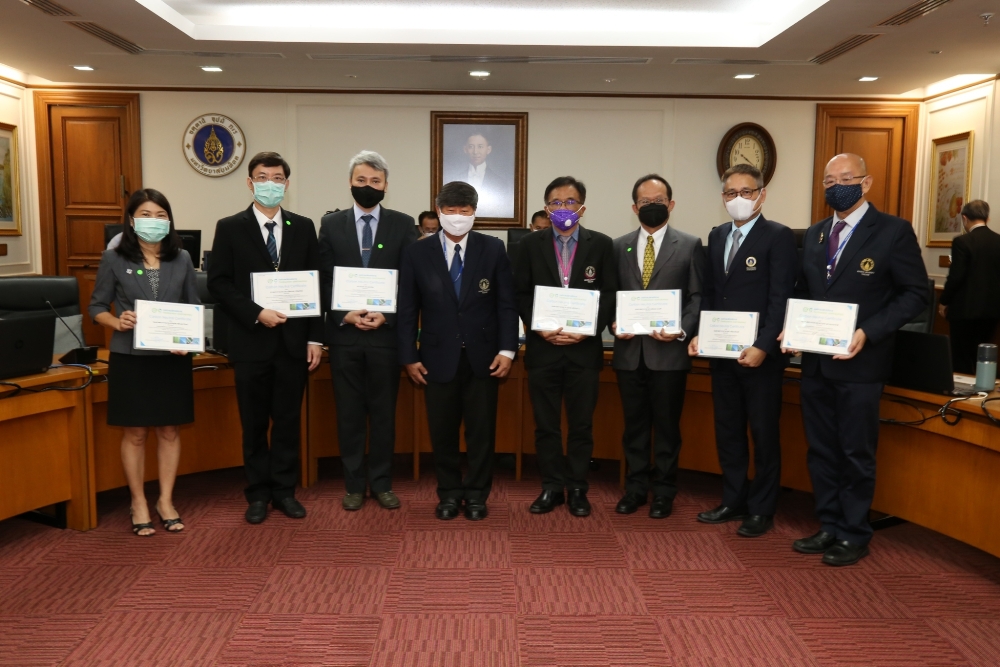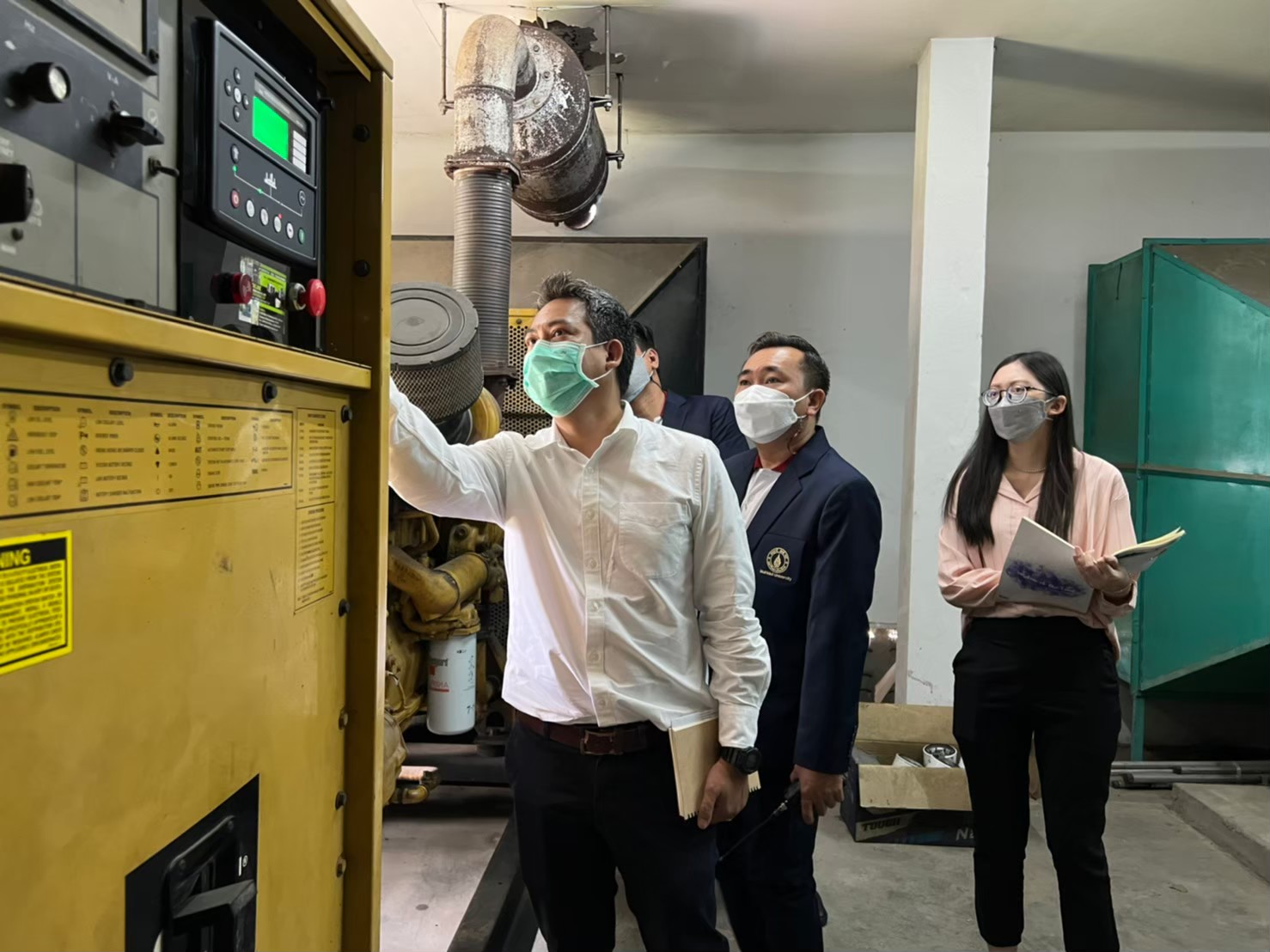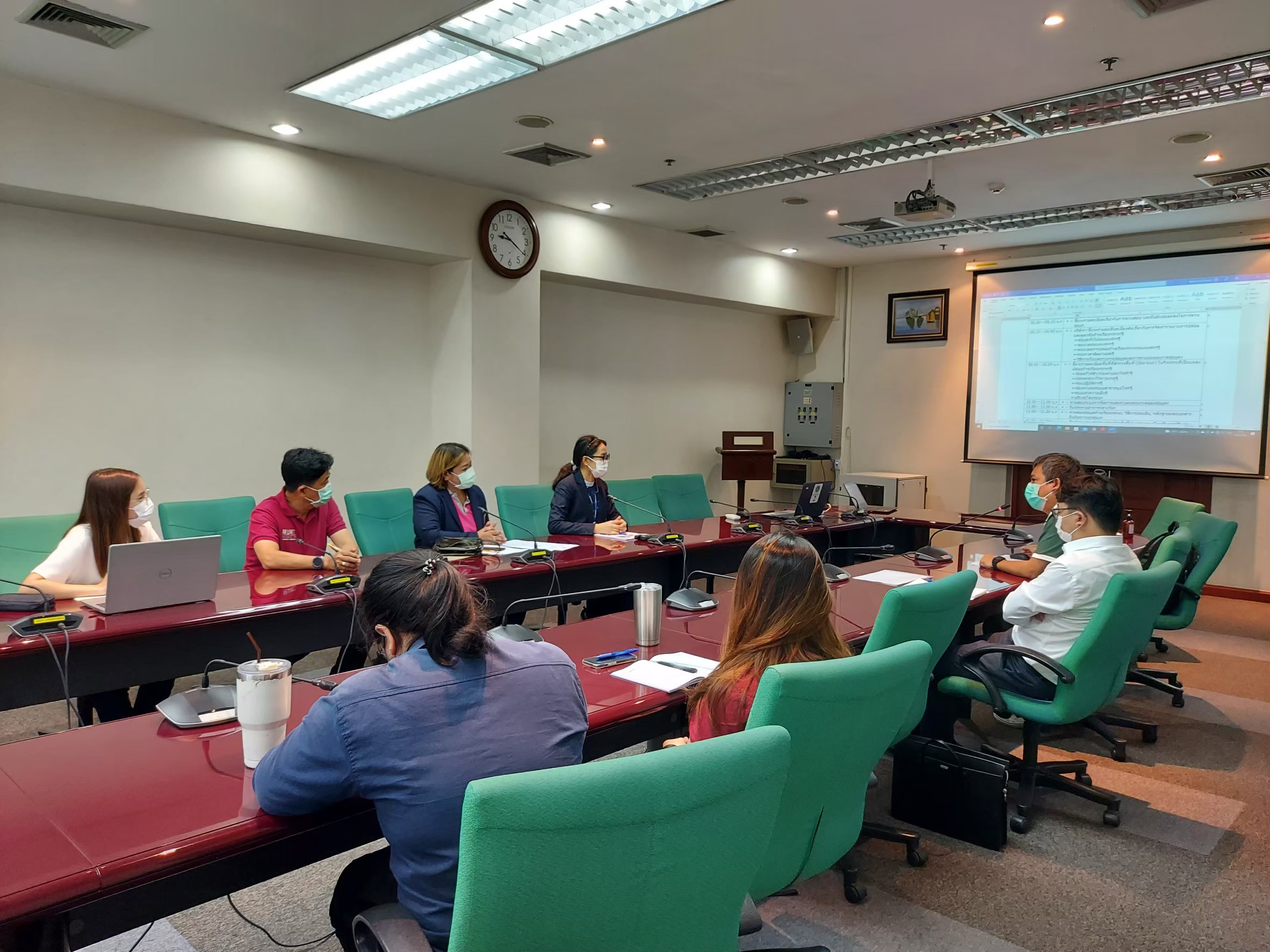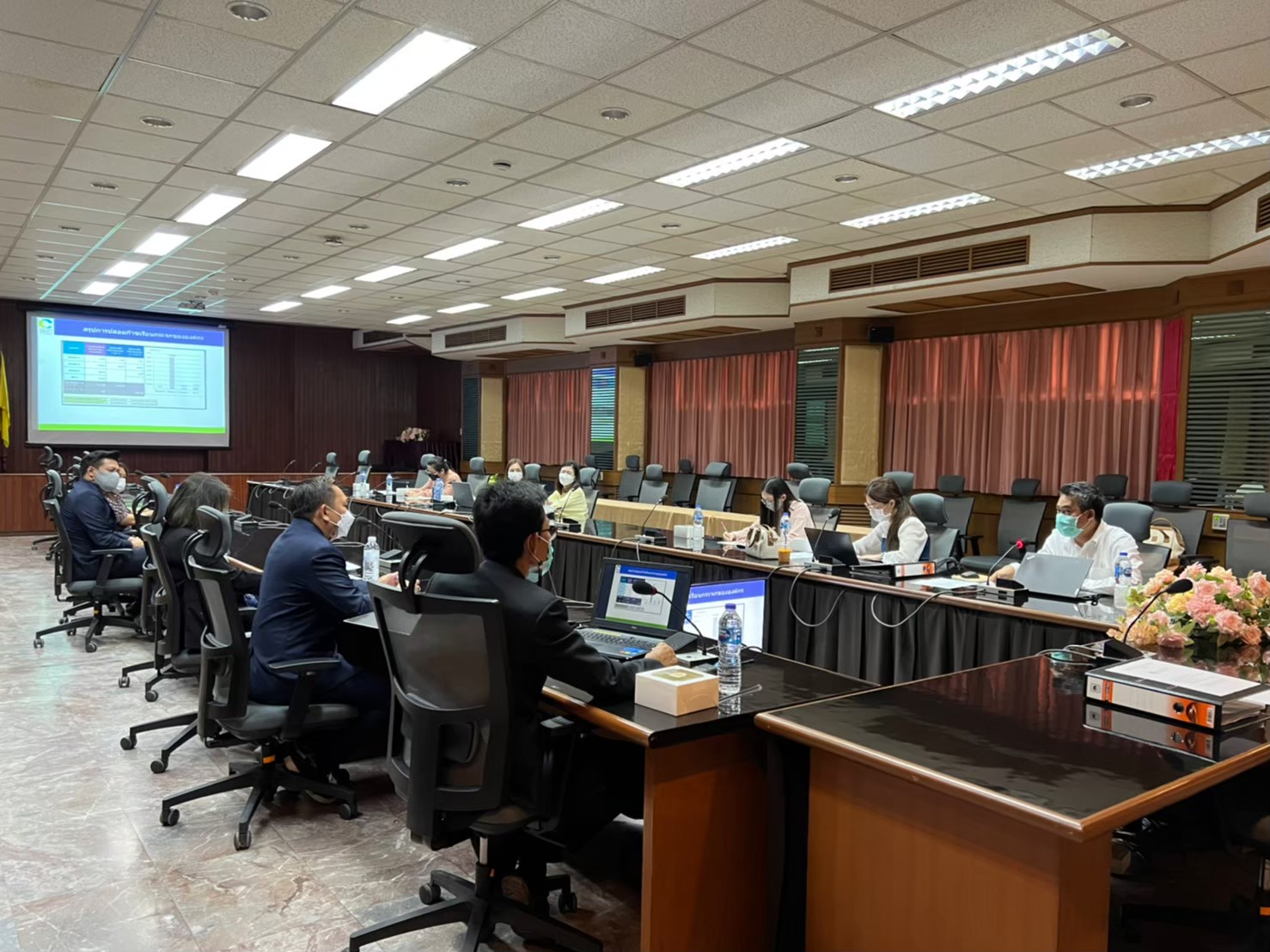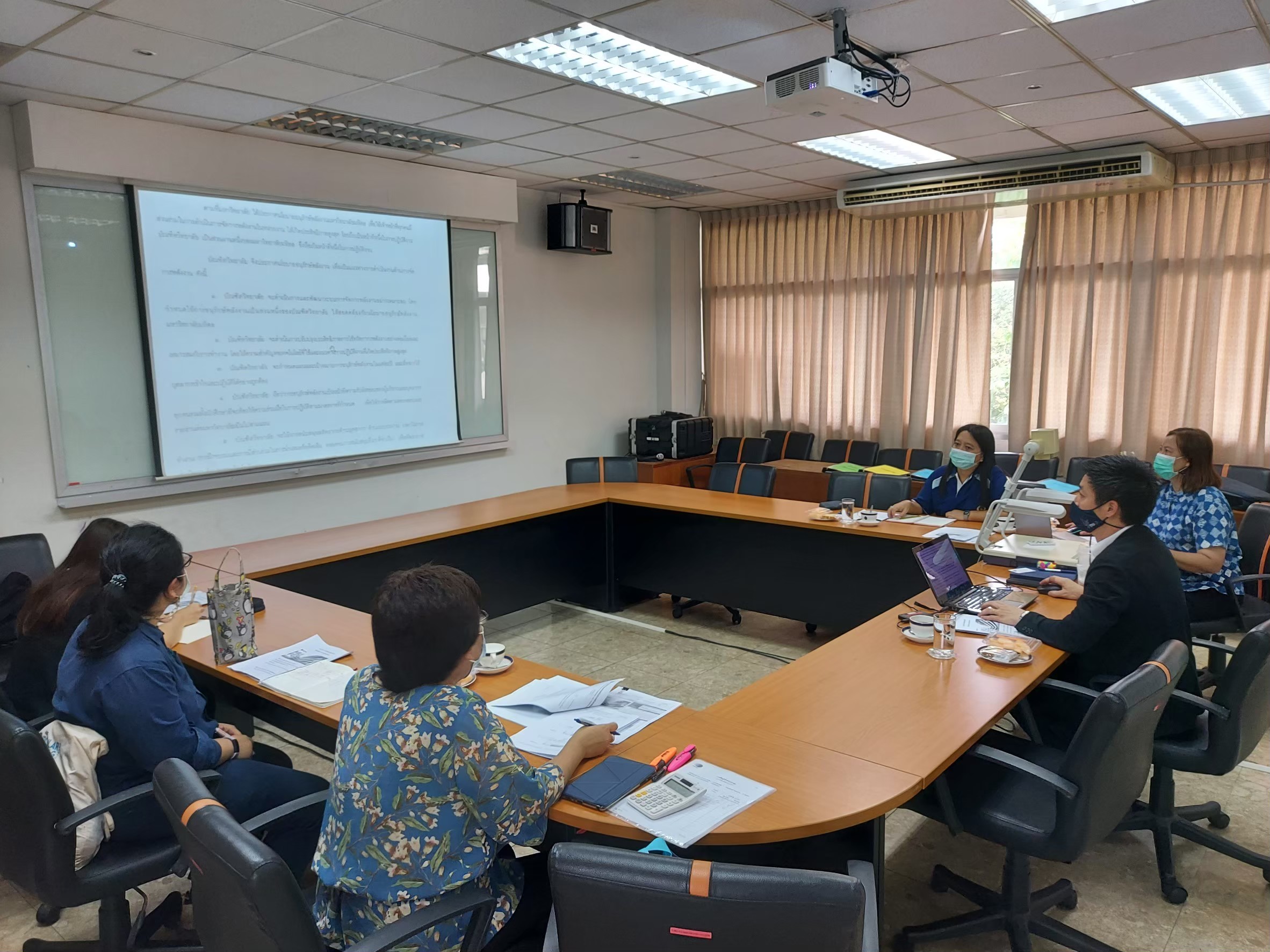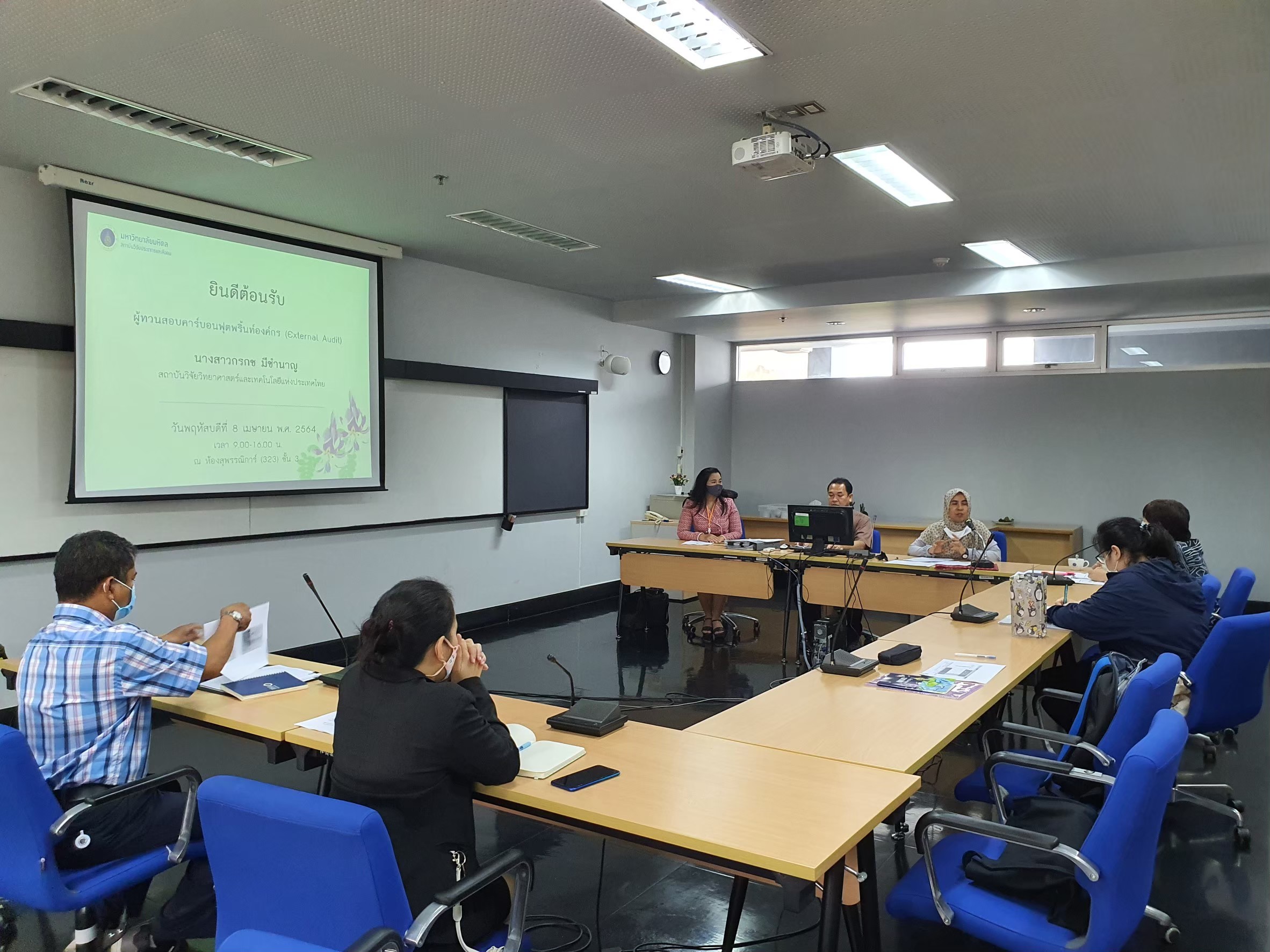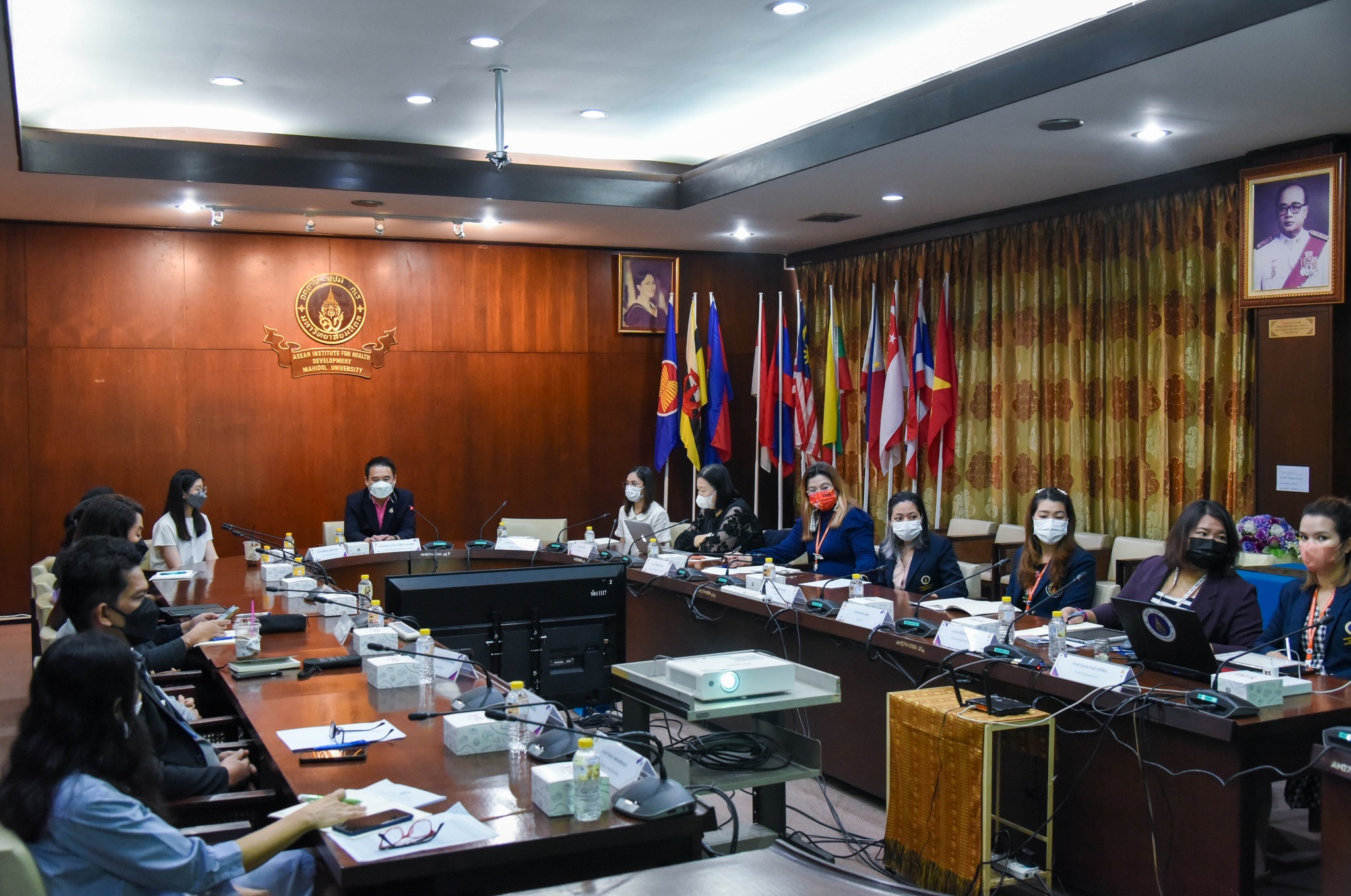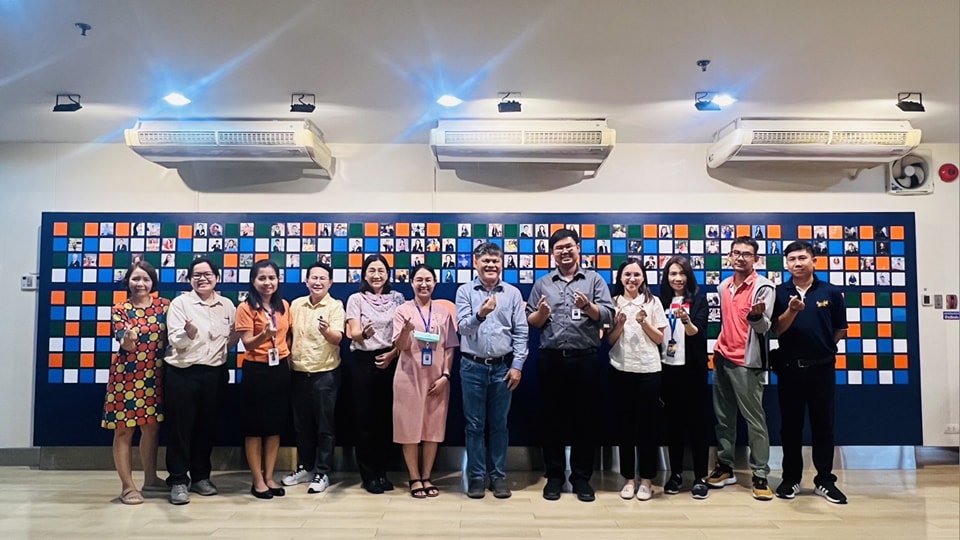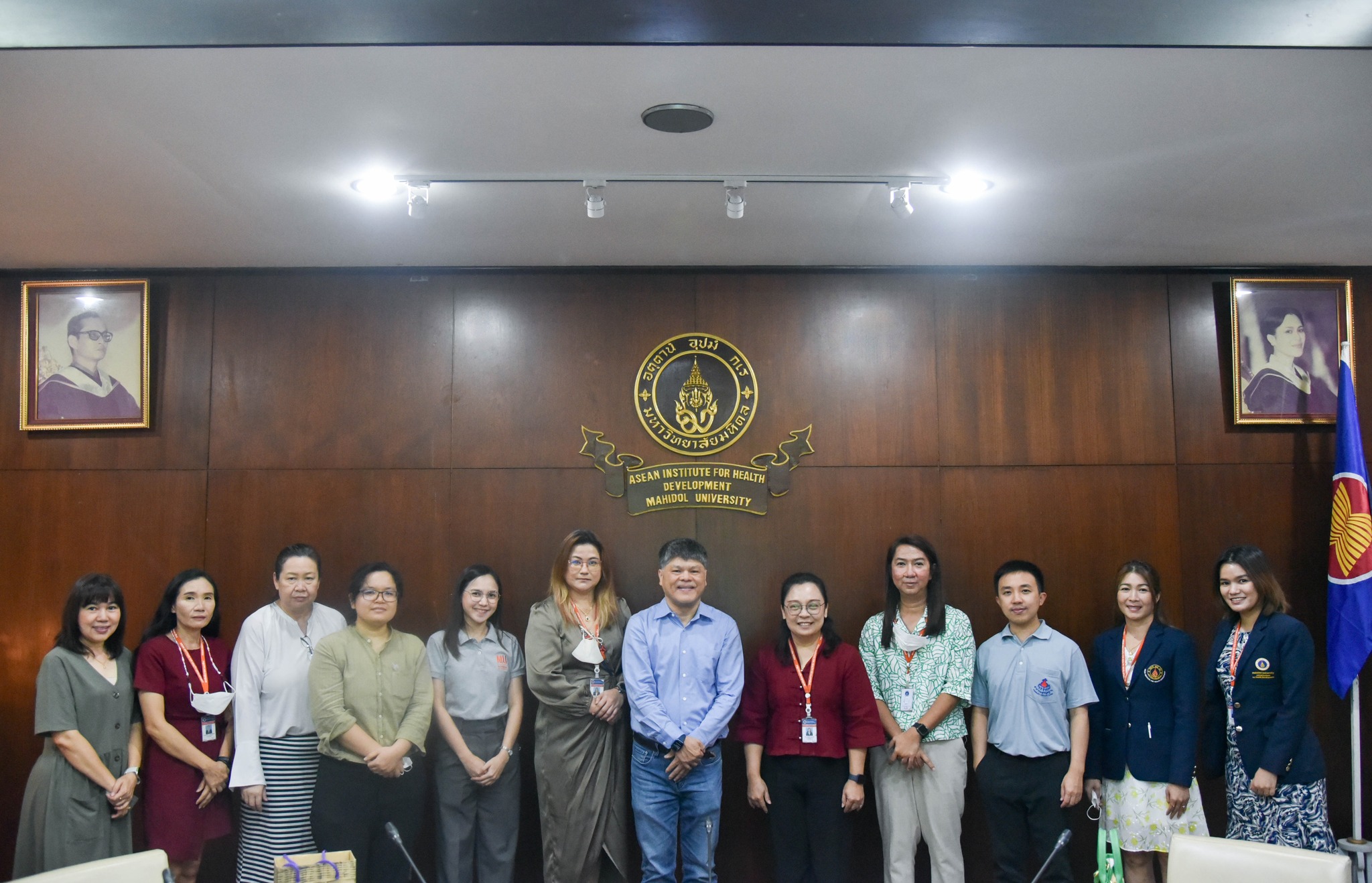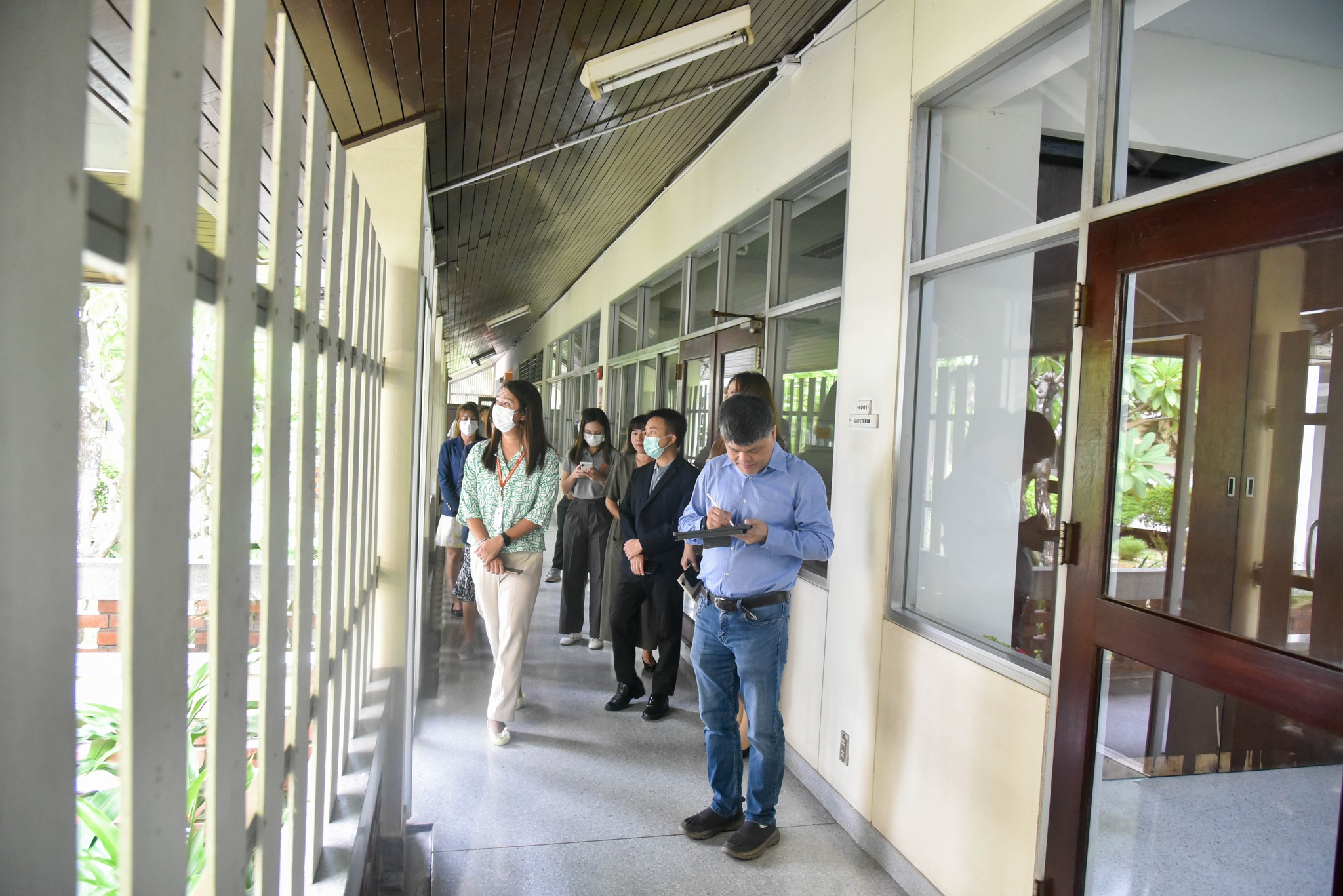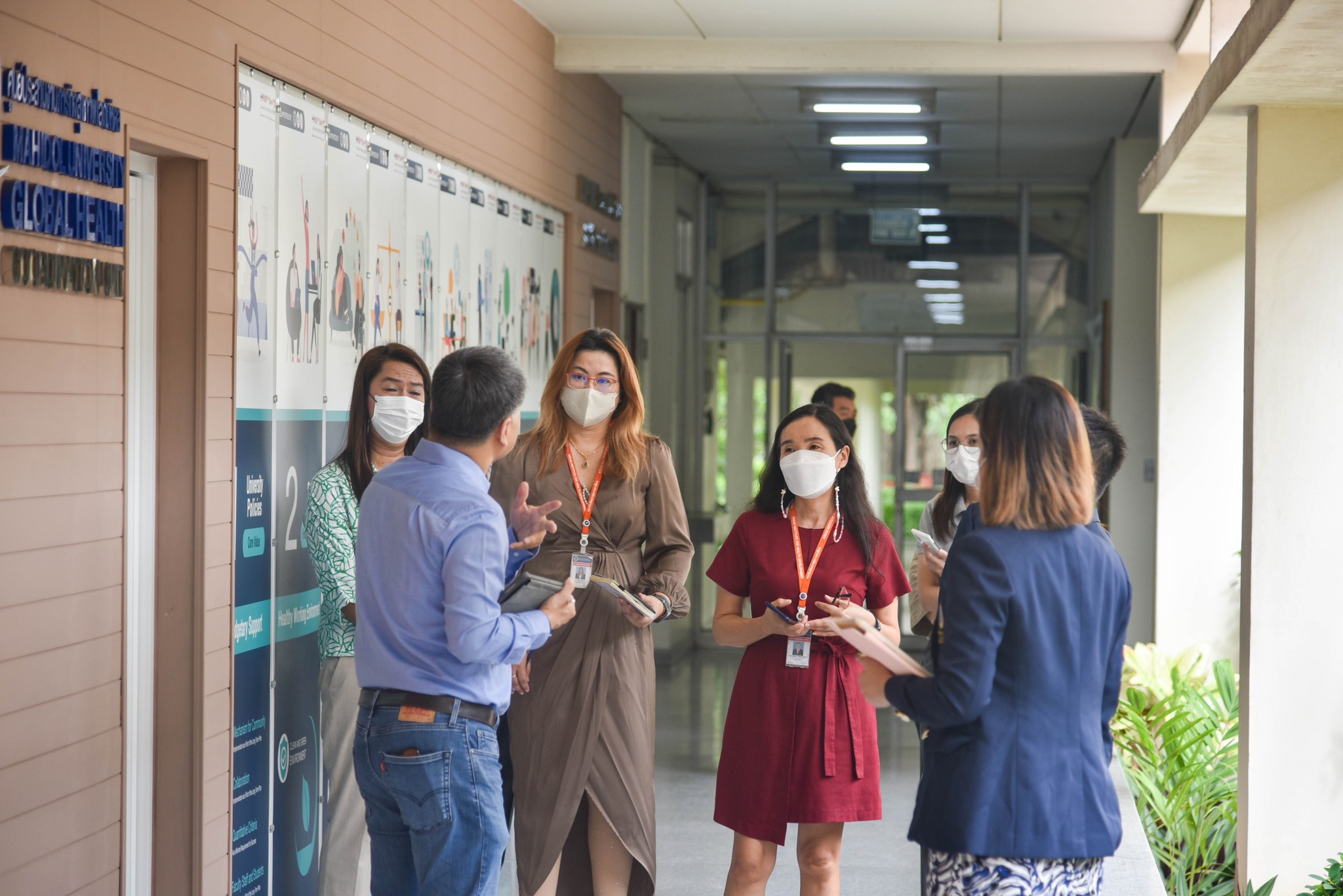Carbon Footprint for Organization is a method to display data of greenhouse gas released from organizational activities which leads to the management guidelines to effectively reduce in greenhouse gas emissions.
Carbon Footprint for Organization
The carbon footprint of an organization is greenhouse gas released by organizational activities, for example, fuel combustion, electricity consumption, waste management, and transportation which are measured in tons of equivalent carbon dioxide. These are considered from the 3 scopes.
- SCOPE I: Direct Emissions from organizational activities, for example, engine combustion, organization-owned vehicles use, chemicals used in wastewater treatment, process/activity leakage, etc.
- SCOPE II: Energy Indirect Emissions, for example, organization energy purchase, for example, electrical power, thermal power, steam power, etc.
- SCOPE III: Other Indirect Emissions, for example, staff travel with non-corporative vehicles, external seminars, materials use, etc.
Carbon Footprint for Organization or Corporate Carbon Footprint is a method to display data of greenhouse gas released from organizational activities which leads to the management guidelines to effectively reduce greenhouse gas emissions. Human activities that continuously release greenhouse gas emissions, agricultural energy, industrial development and expansion, transportation, deforestation as well as natural and environmental destruction are essential causes of global warming. These problems have been becoming more severe.
Division of Physical Systems and Environment Operation
Mahidol University designed the program called MU Carbon Footprint in 2015 as a system to record the greenhouse gas database from faculties/divisions’ activities. ECO Data Program is designed to collect more data where Mahidol University can assess greenhouse gas emissions of the university and can set goals to reduce in greenhouse gas emissions. ECO Data Program developed by the Faculty of Information and Communication Technology. This also includes effective greenhouse gas emissions management of divisions in the university according to sustainability resource use developed by Mahidol University Sustainability Action. The Mahidol University Sustainability Action based on Sustainable Development Goals (SDGs) in Target 12: Ensure Sustainable Consumption and Production Patterns that cover management and effective, sustainable natural resources use, and Target 13: Climate Action Handling.
Additionally, Divisions should understand standard information on the carbon footprint of the organization. The support has been provided to encourage divisions to make the report of greenhouse gas emissions and reabsorption registered to the Thailand Greenhouse Gas Management Organization (Public Organization). An assessment system structure and verified carbon footprint for internal units of the university.
The division of Physical Systems and Environment supports divisions that do carbon footprint for an organization. The carbon compensation process has been initiated into divisions of the university in 2021 by providing the following services.
-
Consulting and scope assessment, evidence examination, greenhouse gas emissions, and internal verification for divisions of the university
-
Coordinating with Thailand Greenhouse Gas Management Organization (Public Organization), and external auditors including expenses at verification and registration
-
Coordinating with carbon markets and Thailand Greenhouse Gas Management Organization (Public Organization) for carbon compensation
Objectives
-
To assess data on greenhouse gas emissions and reabsorption from divisions’ operations in the university
-
To effectively apply to greenhouse gas emissions management of Mahidol University’s divisions
-
To verify and register carbon footprint for the organization of Mahidol University’s divisions
-
To compensate for greenhouse gas emissions from divisions’ activities of Mahidol University
Procedures
1. Process of assessment in carbon footprint for an organization
-
Operative committee appointment
-
Determining scope in the assessment of carbon footprint for an organization
-
Determining the scope of the organization for gathering the sources of greenhouse gas emissions and reabsorption in an organization that needed assessment
-
Determining the scope of activity operation which has greenhouse gas emissions and reabsorption in an organization related to organizational relation. The Scope 1 and Scope 2 will be assessed
-
Studying and collecting data on greenhouse gas emissions of organizations
-
Developing procedures for corporate greenhouse gas emissions of organizations
-
Assessment of the quantity of carbon footprint for an organization
-
Making report of greenhouse gas
2. Audit process in carbon footprint for an organization
-
Internal Audit
-
External audit registered in auditor’s certificate
-
Greenhouse gas report modification as the external auditor suggested
3. Registration in requesting for the trademark of carbon footprint for an organization
- Application and evidence process in requesting for the trademark of carbon footprint for an organization
- Track results requested from the beginning to the end of the process set by Thailand Greenhouse Gas Management Organization (Public Organization) until obtaining the trademark
Thailand Greenhouse Gas Management Organization (Public Organization) will organize an annual event “Hundred Hearts Unite to Reduce Global Warming” every September to thank and award certificates to organizations that attend the activities and projects of greenhouse gas emissions under the operation of Thailand Greenhouse Gas Management Organization (Public Organization)
4. Process of carbon credit compensation
-
Calculate the amount of greenhouse gases to reduce
-
Carbon credit purchase from carbon credit compensation markets
-
Compensation process for greenhouse gas emissions of organization
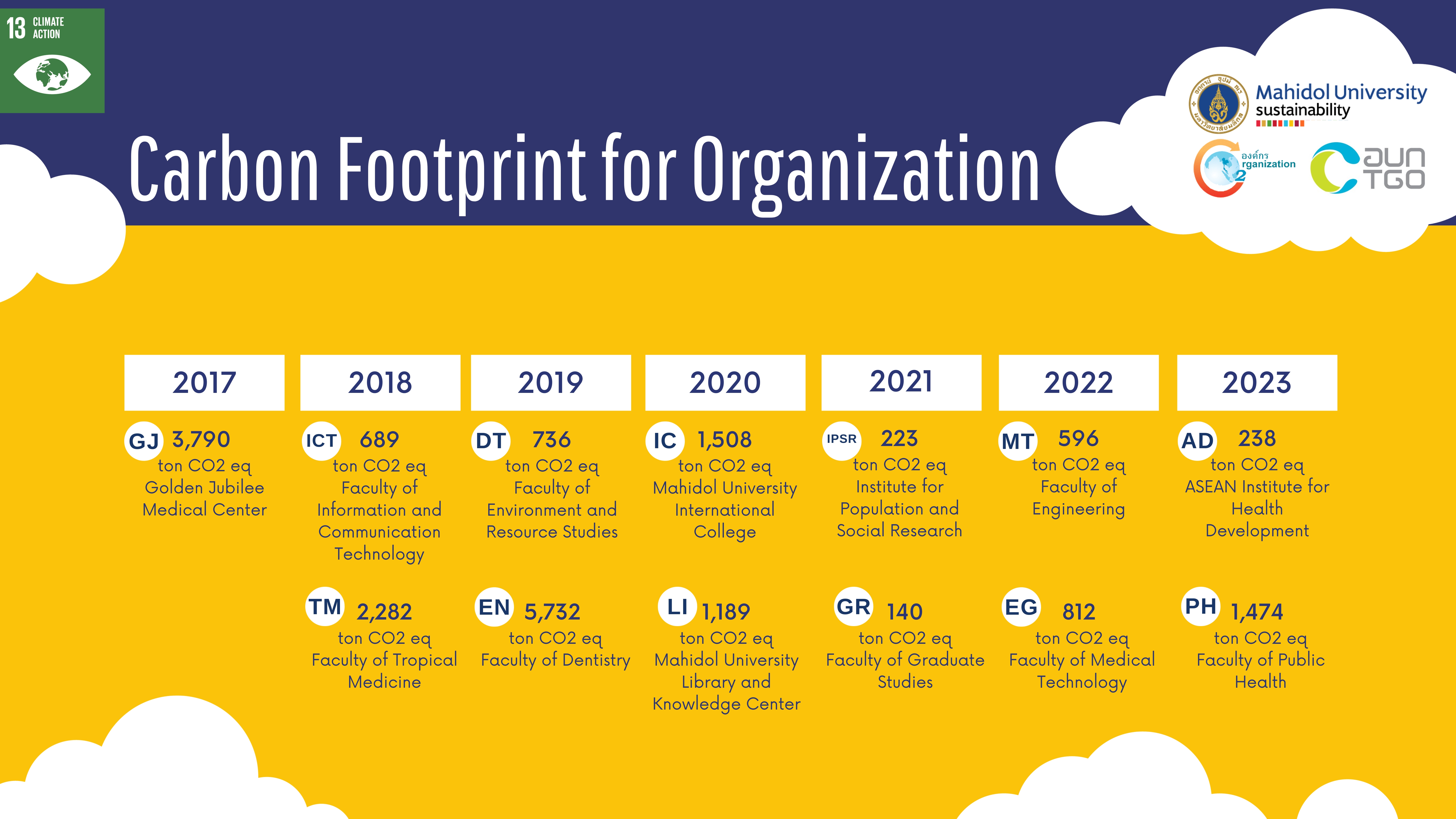
There are faculties that participated and received certification as follows:
- 2017 Golden Jubilee Medical Center, Mahidol University (GJ)
- 2018 Faculty of Information and Communication Technology (ICT) and Faculty of Tropical Medicine (TM)
- 2019 Faculty of Dentistry (DT), and Faculty of Environment and Resource Studies (EN)
- 2020 Mahidol University International College (MUIC), and Mahidol University Library and Knowledge Center (LI)
- 2021 Institute for Population and Social Research (IPSR), and Graduate Studies(GR) (Carbon Offsetting was implemented)
- 2022 Faculty of Medical Technology (MT), and Faculty of Engineer (EG) (Carbon Offsetting was implemented)
- 2023 Faculty of Public Health (PH), and ASEAN Institute for Health Development (AD) (Carbon Offsetting was implemented)
An assessment manual in carbon footprint for hospital, Low Emission Support Scheme
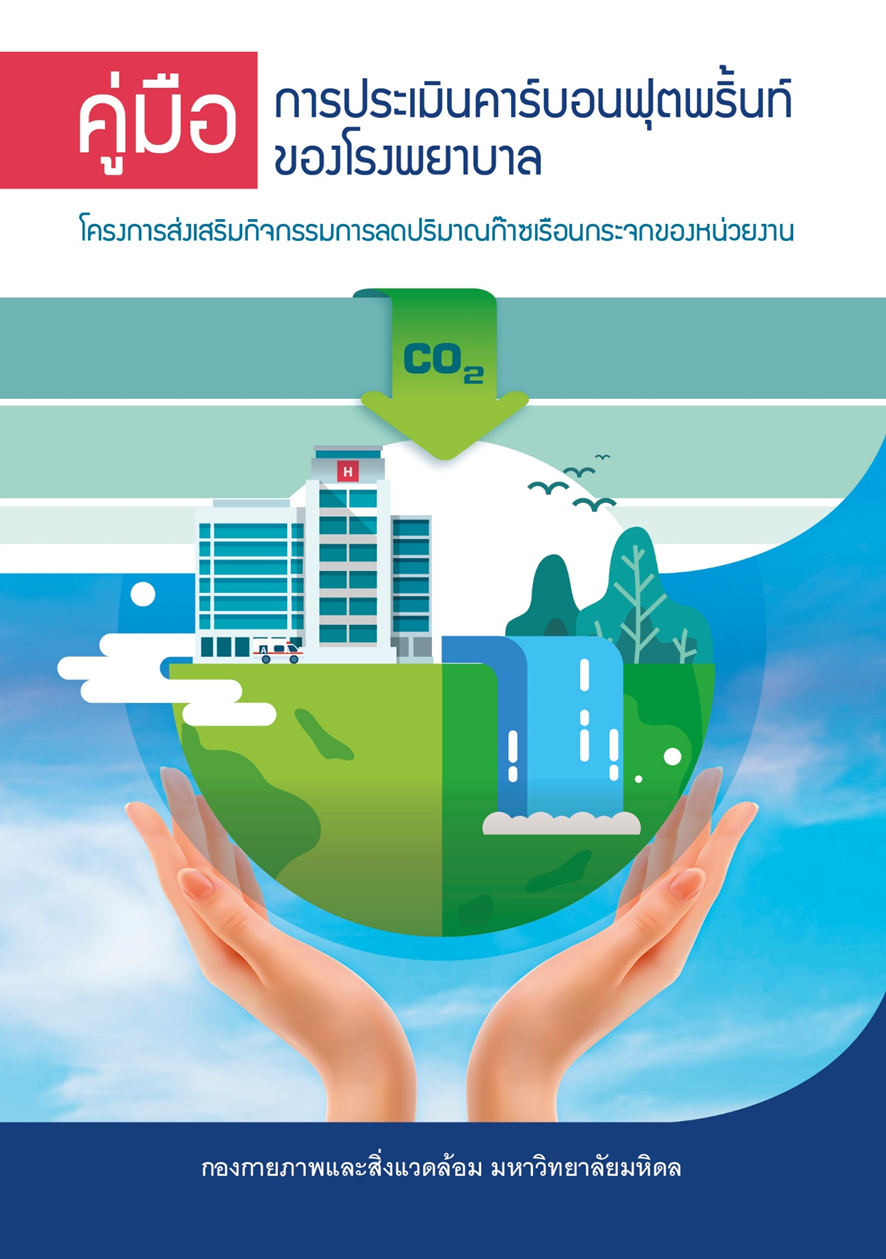
Low Carbon Administrator Project
This program focuses on creating a realization for executives and staff life to make the least impact on the environment in their everyday lives. This is a social responsibility and role model to the Mahidol Community. The data have been collected from the executive’s daily routine for one year to calculate individual greenhouse gas emissions and to compensate reabsorption of greenhouse gas through the Carbon Offsetting Program or to purchase carbon credit to compensate which is the credit received from greenhouse gas emissions activities or replace greenhouse gas emissions, for example, renewable energy, biological gas, etc. This has been registered to Thailand Greenhouse Gas Management Organization (Public Organization) which means that the executives of Mahidol University did not have greenhouse gas emissions in that year. This program started in 2018. There were a total of 14 executives and compensation of 118 tons equivalent carbon dioxide of greenhouse gas emissions. Started in 2018 and has executives who participated each year as follows:
- 2018 there were a total of 14 executives and compensation of 118 tons equivalent carbon dioxide of greenhouse gas emissions.
- 2019 there were a total of 16 voluntary administrators and compensation of 178 tons equivalent carbon dioxide of greenhouse gas emissions.
- 2020 there were a total of 18 voluntary administrators and compensation of 219 tons equivalent carbon dioxide of greenhouse gas emissions.
- 2021 there were a total of 22 voluntary administrators and compensation of 386 tons equivalent carbon dioxide of greenhouse gas emissions.
- 2022 there were a total of 13 voluntary administrators and compensation of 79 tons equivalent carbon dioxide of greenhouse gas emissions.
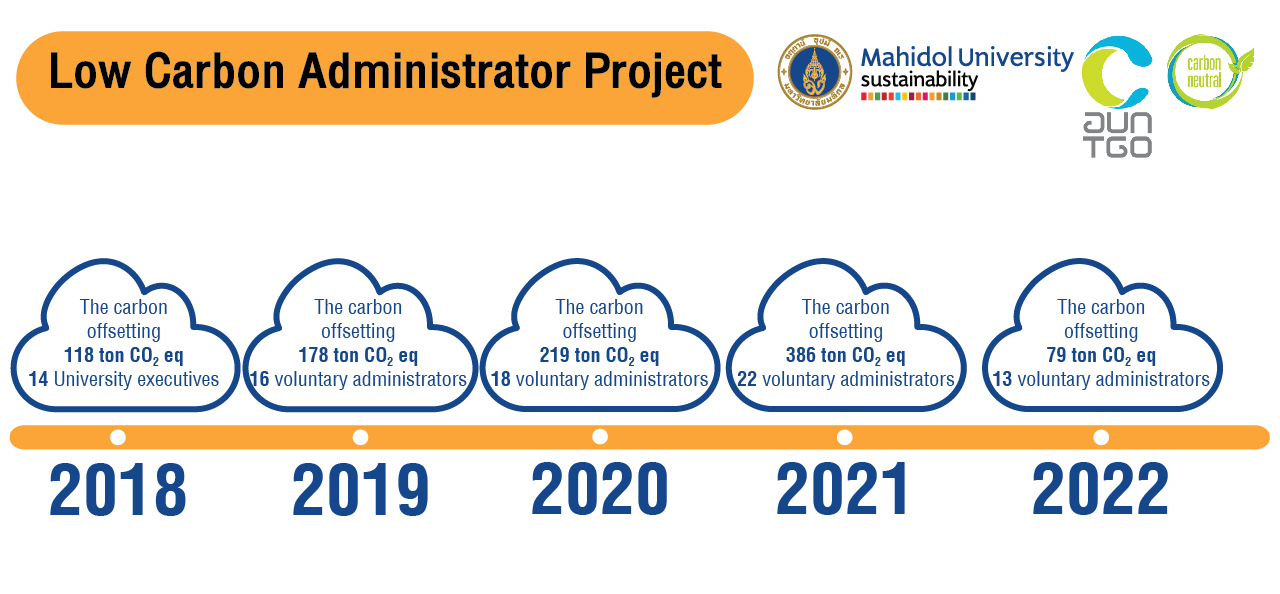
These two projects are a way to effectively build sustainable resource consumption and to develop a better quality of life for staff, students, and communities surrounding the university including building the potential of staff and organizational greenhouse gas emissions management. These are to become Low-Carbon Society to drive Mahidol University to sustainable development according to Mahidol University Sustainability Action, and to be a role model for divisions and other educational institutes in the future.
-
พิธีเปิดโครงการประเมินคาร์บอนฟุตพริ้นท์ คณะเทคโนโลยีสารสนเทศและการสื่อสารhttps://www.mahidol.ac.th/th/2018/footprint/➞
-
ม.มหิดล ผุดโครงการลดคาร์บอนฟุตพริ้นท์https://thaibccnews.com/ม-มหิดล-ผุดโครงการลดคาร์/➞
-
ม.มหิดล รับประกาศนียบัตรในงาน “ร้อยดวงใจ ร่วมใจลดโลกร้อน 2561https://mahidol.ac.th/th/2018/global-warming-3/➞
-
ม.มหิดล รับมอบประกาศนียบัตรในงาน “ร้อยดวงใจ ร่วมใจลดโลกร้อน 2562https://mahidol.ac.th/th/2019/global-warming-award/➞
-
ม.มหิดล รับประกาศนียบัตรในงาน “ร้อยดวงใจ ร่วมใจลดโลกร้อน 2563https://mahidol.ac.th/th/2020/global-warming-4/➞
-
พิธีมอบประกาศนียบัตรแก่ผู้บริหารที่เข้าร่วมโครงการผู้บริหารคาร์บอนต่ำ ประจำปี 2563https://mahidol.ac.th/th/2020/greenhouse-gas/➞
-
ผู้บริหารคาร์บอนต่ำ มหิดลสาร ปีที่ 43 ฉบับที่ 10 (ตุลาคม 2561) หน้าที่ 23https://mahidol.ac.th/th/2018/october/➞
-
AIHD organized the Kick-Off meeting of the project to assess the Carbon Footprint of the Organizationhttps://aihd.mahidol.ac.th/news/show_news_en.php?news_id=382➞
-
สถาบันฯ เข้ารับการทวนสอบคาร์บอนฟุตพริ้นท์ขององค์กรhttps://aihd.mahidol.ac.th/news/show_news.php?news_id=546➞
Thailand Greenhouse Gas Management Organization (Public Organization)



